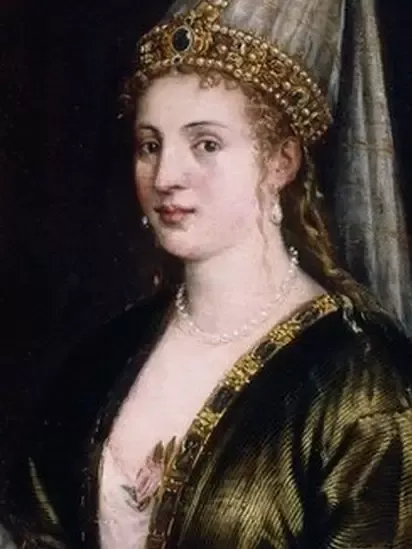Horim Sultan: Roxellana of Ukraine who became Horim Sultan of the Ottoman Empire
This is a scene from the royal harem of Sultan Ahmed Suleiman of the Ottoman Empire in the 16th century, where the arrival of a concubine left a deep impression on his time and the Ottoman Empire.
This far-reaching development was due to the arrival in his harem and life of Roskilana i.e. Khurram Sultan who is remembered today as Hurrim Sultan.
When a mosque named after Sultan Ahmed Suleiman and Horaim Sultan was hit by 'Russian shelling' in the Ukrainian city of Mariupol yesterday, many people were seen asking who Roxillana was and what they had to do with Ukraine.
There was a tradition in the Ottoman Empire that some girls were brought to the royal harem by being kidnapped and enslaved from different parts of it. Many of them were among the most powerful global figures of their time.
The harem of Sultan Suleiman had slaves before him and they had children before him but there was no precedent for the relationship between him and the harem Sultan and according to a historian this period of the Ottoman Empire It can also be called 'era'.
The advent of the Horim Sultan into the life of Sultan Suleiman marks the beginning of an era in the history of the empire in which the queen had no formal office, referred to by historians as the 'Empire of Women'.
When Sultan Suleiman ascended the throne as the 10th ruler of the Ottoman Empire in September 1520, it was bounded by the Eastern Mediterranean, the Black Sea and its coastal areas, most of what is now the Middle East and southeastern Europe. Was included.
From the conquests of Belgrade and the main island of Rhodes in the Mediterranean to the conquest of Belgrade in the early years of his reign, the empire's borders spread further to Europe in the west and to Asia in the east.
However, according to historians, one of the most important moments in the life of Sultan Suleiman, who ruled this vast empire for almost 50 years, was the arrival of Roxillana, the Hoorim Sultan.
Historian Leslie Pierce writes in her book, The Imperial Harem: Women and Sovereignty in the Ottoman Empire, about the royal harem and the role of women in the Ottoman Empire: All the children were born to slave mothers.
But from the beginning of the reign of Hurriym Sultan in 1520 until the death of Qusam Sultan in the middle of the 17th century, the Ottoman Empire was in many ways under the influence of women whose power was based on the fact that Were his favorite maids. It would not be wrong to say that the Haram had become the center of politics. "The main trend of the harem was not sex but family politics."
There are four main characters in this period of the influence of maidens: Khurram or Hoorim Sultan, his daughter-in-law Noor Bano Sultan and then his daughter-in-law Safia Sultan and finally Safia Sultan's grandson Sultan Ahmed I's favorite maiden Qusam Sultan.
In Ottoman history, the "Women's Empire" was also the time of powerful queens in Europe, including Elizabeth I of England and Catherine da Medici of France.
It is worth mentioning here that these slave girls who were kidnapped from different parts of Europe and sold in the bazaars and reached the Ottoman harem on an equal footing with other royal families of the world and corresponded with the entire royal literature and etiquette. Also happened Queen Elizabeth I of England also sent her portrait as a gift to Safia Sultan (another Keynes) in 1593.
Historian Leslie Pierce's book, Empress of the East, published in 2020 on the life of the Horim Sultan, also discusses how a slave girl becomes the queen of the Ottoman Empire.
He wrote that "although the Ottomans did not have a formal position of queen, Roxellana (Hurrim Sultan) played this role and she fully equated the famous queens of Europe in the 16th century."
